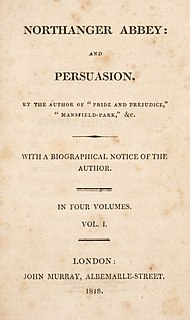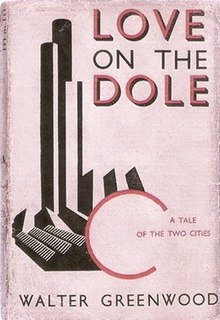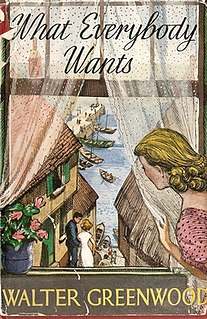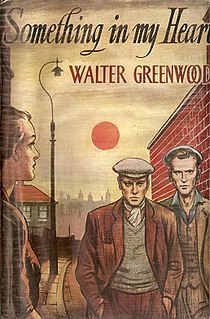
Henry James was an American-born British author. He is regarded as a key transitional figure between literary realism and literary modernism, and is considered by many to be among the greatest novelists in the English language. He was the son of Henry James Sr. and the brother of philosopher and psychologist William James and diarist Alice James.

Persuasion is the last novel completed by Jane Austen. It was published on December 20, 1817, along with Northanger Abbey, six months after her death, although the title page is dated 1818.

The Awakening is a novel by Kate Chopin, first published in 1899. Set in New Orleans and on the Louisiana Gulf coast at the end of the 19th century, the plot centers on Edna Pontellier and her struggle between her increasingly unorthodox views on femininity and motherhood with the prevailing social attitudes of the turn-of-the-century American South. It is one of the earliest American novels that focuses on women's issues without condescension. It is also widely seen as a landmark work of early feminism, generating a mixed reaction from contemporary readers and critics.

Love on the Dole is a novel by Walter Greenwood, about working class poverty in 1930s Northern England. It has been made into both a play and a film.
Walter Greenwood was an English novelist, best known for the socially influential novel Love on the Dole (1933).

Come and Get It is a 1936 American lumberjack drama film directed by Howard Hawks and William Wyler. The screenplay by Jane Murfin and Jules Furthman is based on the 1935 novel of the same title by Edna Ferber.

Herbert Brough Falcon Marshall was an English stage, screen and radio actor who starred in many popular and well-regarded Hollywood films in the 1930s and 1940s. After a successful theatrical career in the United Kingdom and North America, he became an in-demand Hollywood leading man, frequently appearing in romantic melodramas and occasional comedies. In his later years, he turned to character acting.

Barbary Coast is a 1935 American historical Western film directed by Howard Hawks. Shot in black-and-white and set in San Francisco during the Gold Rush, the film combines elements of the Western genre with those of crime, melodrama and adventure. It features a wide range of actors, from hero Joel McCrea to villain Edward G. Robinson, and stars Miriam Hopkins in the leading role as Mary 'Swan' Rutledge. In an early, uncredited appearance, David Niven plays a drunken sailor being thrown out of a bar.

Alice Adams is a 1935 romantic drama film directed by George Stevens and starring Katharine Hepburn. It was made by RKO and produced by Pandro S. Berman. The screenplay was by Dorothy Yost, Mortimer Offner, and Jane Murfin. The film was adapted from the novel Alice Adams by Booth Tarkington. The music score was by Max Steiner and Roy Webb, and the cinematography by Robert De Grasse. The film received Academy Award nominations for Best Picture and Best Actress.

Ruth Dunning was a Welsh actress of stage, television, and film.
Greenpark Productions Ltd is a British documentary film production company, founded by Walter Greenwood in Polperro, Cornwall in 1938. The company relocated to London in 1939. After the war it expanded into making upmarket corporate films. Amongst its roster of directors were Ken Annakin, Ralph Keene and Humphrey Swingler, brother of the poet Randall Swingler.

Little Jessie James was a musical farce that was the biggest hit of the 1923-24 Broadway season.

Only Mugs Work is a 1938 melodromatic crime novel by the British writer Walter Greenwood. Greenwood had established his reputation in 1933 with Love on the Dole, set in a district closely modelled on working-class Salford. In this case the setting is shifted to London's Soho, but features a similar blend of realism and drama. It is set amongst the spivs of the capital city. It was one of a number of novels that focused on the activities of the London underworld in the late 1930s including There Ain't No Justice, The House in Greek Street and Night and the City.

Saturday Night at the Crown is a 1959 novel by the British writer Walter Greenwood. It was his final novel, inspired by his 1954 play of the same title. The play had premiered in Morecambe in 1954 before running for 234 performances at the Garrick Theatre in London's West End from 1957 to 1958. He dedicated to the novel to Thora Hird who had starred in the play.

Down by the Sea is a 1956 novel by the British writer Walter Greenwood. It is the final entry of a trilogy set in the fictional fishing port of Treeloe in Cornwall. Durrall, the principal protagonist of the previous novel marries a woman and is able to prosper by opening his cottage as a tea house for tourists.

So Brief the Spring is a 1952 novel by the British writer Walter Greenwood. It is the first in the author's trilogy set in the fictional fishing port of Treeloe in Cornwall. It was developed out of a play which Greenwood had written in 1945. The novel is dedicated to Robert Newton who appeared in the play. It focuses on Randy Jollifer, formerly of the Royal Navy, attempting to settle down to postwar life in his home town. The book and its sequels sold steadily, without enjoying the spectacular popularity of his best-known work Love on the Dole.

What Everybody Wants is a 1954 novel by the British writer Walter Greenwood. It is the second of a trilogy set in the fictional fishing port of Treeloe in Cornwall during the postwar years. While the principal character of the first novel Randy Jollifer reappears, there is a shift to focus on the life of Darky Durrant. Durrant is a local poacher of gypsy heritage who, despite a distinguished war record as a commando, lives on the margins of society.

The Secret Kingdom is a 1938 novel by the British writer Walter Greenwood. Like his best-known novel Love on the Dole it is set in Salford. It portrays the working-class socialist Byron family, and particularly the eldest daughter Paula who tries to establish an independent identity after finding working a parlour maid. She encounters Bert Treville in nearby Manchester and the two begin a courtship. After his death due to heavy drinking, she brings up her son Lance as a single-mother, throwing her effort into her talented child she is vindicated when he emerges as a talented concert pianist - performing on national radio in the final scene.

His Worship the Mayor is a 1934 novel by the British writer Walter Greenwood. It was his second novel, following on from the success of his bestselling debut Love on the Dole the previous year. His new work drew on his experience as a Labour councillor, and focuses on corruption in local government a theme also addressed in Winifred Holtby’s South Riding. The novel features Sam Grundy, the bookmaker who had appeared in Love on the Dole.

Something in My Heart is a 1944 novel by the British writer Walter Greenwood. It is a loose sequel to his debut and best-known novel Love on the Dole, a 1933 work set in Salford at the height of the Great Depression. This book presented a more optimistic view of a potential postwar future that was absent in the despair in the original novel.

















